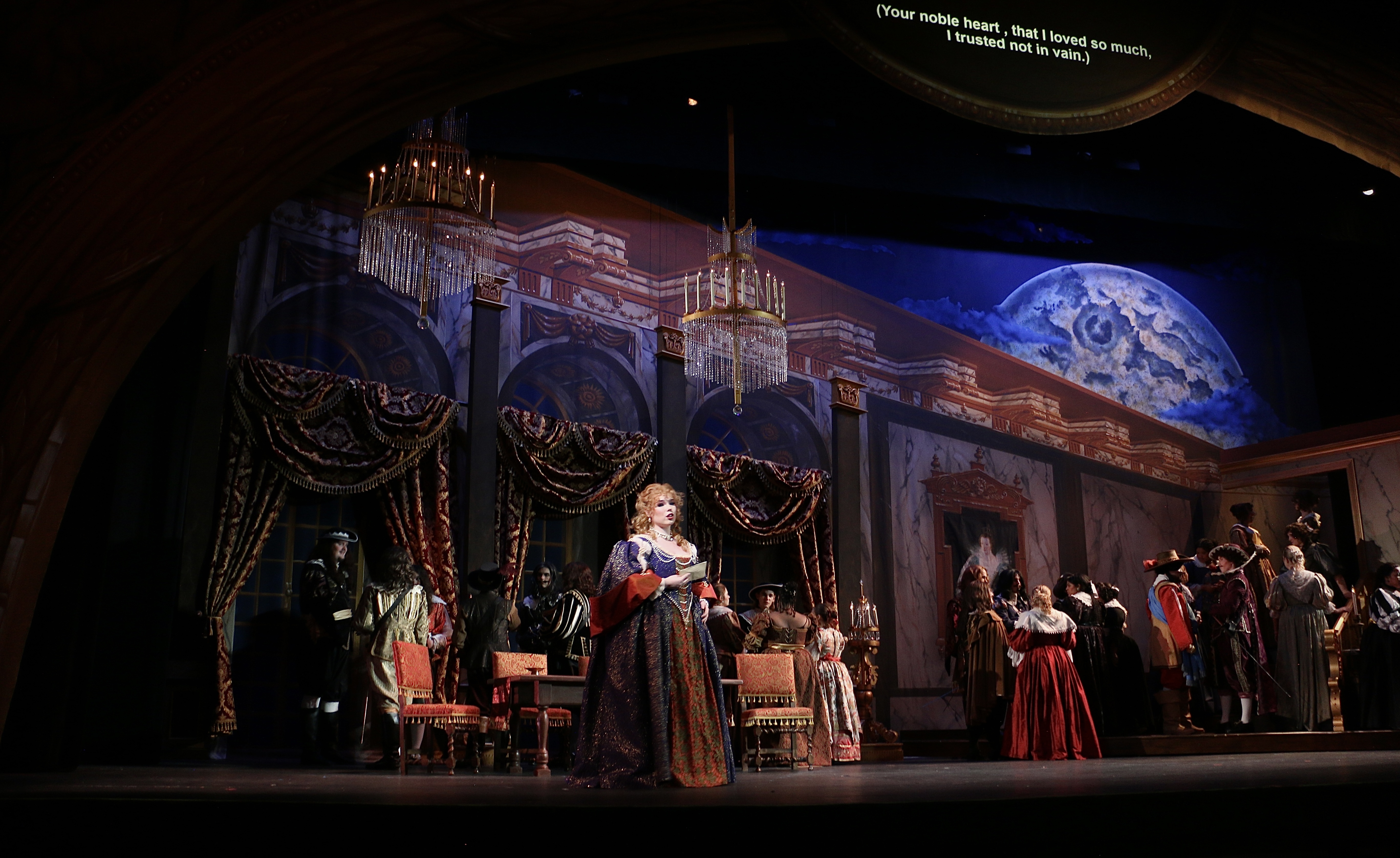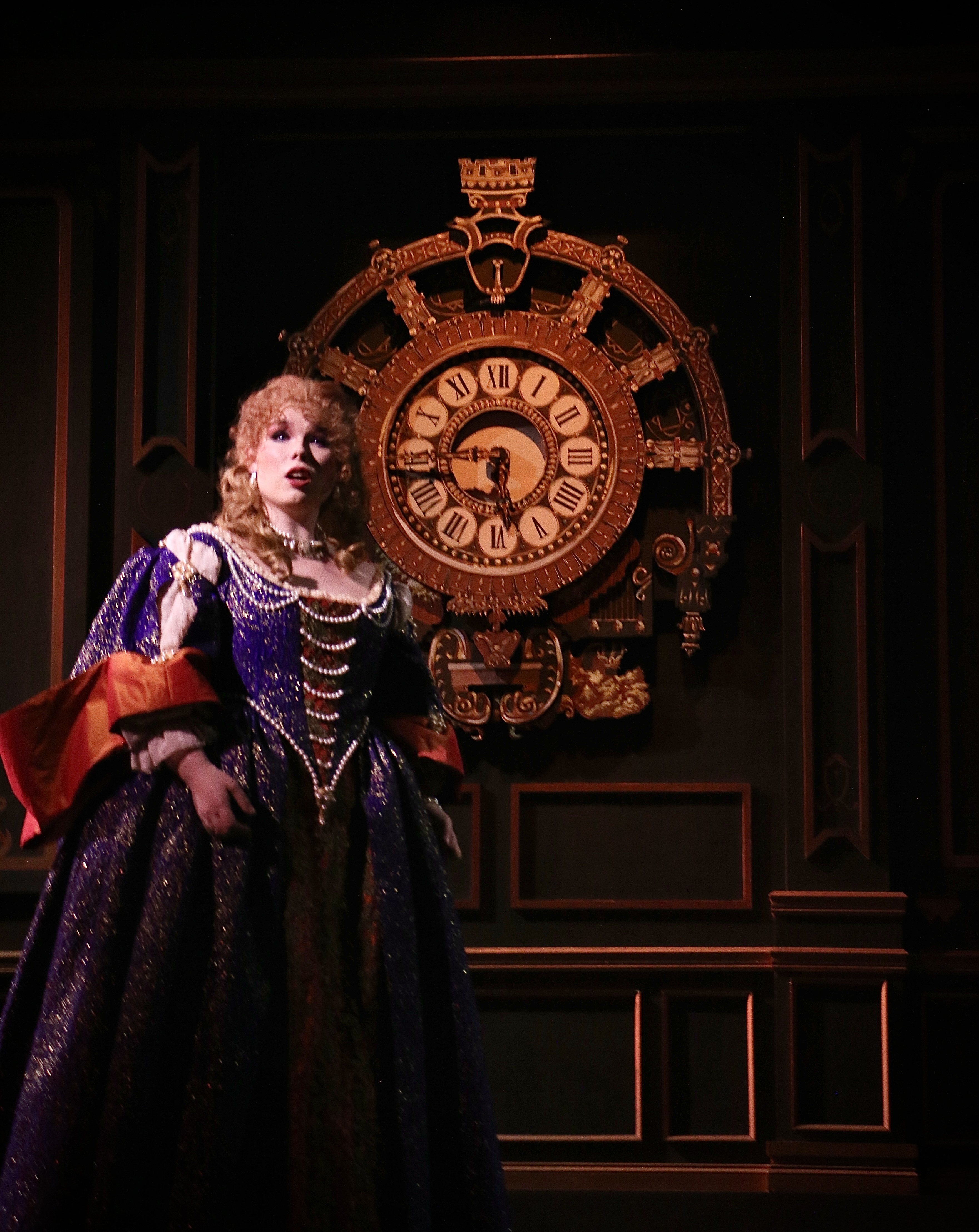Meet Our Member of the Week: Nikolas Serrano
June 20, 2024
Nikolas Serrano is a set designer with experience in theatrical set design with plays, operas, and musicals as well as some educational experience designing for themed entertainment pieces and experiences. Serrano is originally born and raised in South Florida to a hispanic family, being a first generation Cuban-American and of Puerto Rican heritage. Most recently, Serrano graduated from University of North Carolina School of the Arts with a BFA in set design as part of the class of 2024. He is excited to start his post-graduation career and is currently looking for opportunities to work with exciting new collaborators and new ways to create great storytelling. Check out Serrano's website portfolio to see more about him and his work!
Check out his interview with USITT below!
As live entertainment technicians, we always talk about our work. But who are you, outside of your work in live entertainment?
Outside of my work, I enjoy comedy, art, movies, and even sports. I was born and raised in South Florida in the Fort Lauderdale area. With that, I am forever a Miami Marlins and Miami Heat fan, a huge fan of all things theme parks (especially the ones in Orlando), and a lover of Cuban food!
What sparked your interest in scenic design? How did you get where you are today?
It’s hard to say what moment sparked my interest in scenic design. Growing up in South Florida I was always surrounded by such exciting design and theatre. I spent lots of time growing up in theatres, while I would often go along with my older sister to her job as a stage/production manager, and really developed a love and intrigue for what I saw on stage. By the time I was 12 years old, I knew I wanted to be involved in the creation of those exciting worlds on stage. Once in high school, with some amazing teachers, I refined that excitement into a love of the art of scenic design. Additionally, growing up in South Florida I would often visit the many themed experiences there like Walt Disney World, Universal Studios, the Kennedy Space Center, etc. This sparked an interest in themed entertainment design that has persisted to this day, a world that I really want to be a part of as an artist someday.
USITT emphasizes collaboration across different disciplines in theatre. How do you collaborate with other members of a production team, such as designers, actors, and directors, to achieve a cohesive production?
One of my favorite parts of designing scenery for theatre is the collaboration with others in the process of creating something everyone can be proud of. That collaboration for me is often with the director, lighting designer, costume designer, scenic painters, and technicians; but collaboration is never limited and can be different depending on the project. I find it interesting to see what everyone brings to the discussions when creating theatre, especially in those early stages where everyone is evaluating their emotional responses to the theatre piece and initial research. Nurturing different perspectives and ideas with the other artists creates some beautiful products.

Do you have a favorite project you’d like to tell us about?
I’ve been thinking of this question and I don’t have a direct answer, all of the projects I’ve done I’m proud of for vastly different reasons. I love how each theatrical project has brought me all new ways of thinking about design and the world around me, as tacky as it is I have to say that my favorite project will always be my next one, I look forward to finding out what that will be.
How do you stay updated on emerging trends and techniques in scenic design? Are there any particular resources or communities you rely on for inspiration and learning?
At the 2024 USITT Conference in Seattle, WA I had the amazing opportunity to learn some awesome new ways people are using tools and techniques for theatrical design. For example, I had the opportunity to see some new functions Vectorworks offers at their booth as well as some new ways of creating visual effects. That was an awesome week of learning new and exciting techniques, it was a great way to get updated on the latest trends in the industry. As far as inspiration I often find it everywhere around me, but especially at museums of all kinds. I love good museums of any genre, I find myself pulling lots of inspiration from museums that I likely wouldn’t have found otherwise.
What is your favorite part of the design process? Are there any products you swear by, or rending styles you prefer?
One of the parts of the design process that I enjoy the most is being able to sit with directors, fellow designers, and all other collaborators to discuss the work of theatre and what we are trying to bring to audiences. Hearing everyone’s, often different, perspectives on the script is what informs a completely different work of art separate from any other, I find that to be very exciting. A tool that I live and die by at the moment is the Vectorworks Freehand Tool. It is a tricky tool to build confidence with but it is very helpful for set designers. I often get slack because I always draft using my trackpad rather than a mouse and yet I still love the freehand tool.
What do you consider the most rewarding aspect of being a scenic designer? Conversely, what are some of the biggest challenges you face in this role?
I love an audience reaction to a theatrical reveal. I find it hugely rewarding hearing and seeing audience reactions when the main curtain goes up, a scenery piece spins around, or any of the other ways to surprise audiences with scenery. There’s something so validating from an audience’s enticed gasp. Conversely, one of the hardest parts in a design process is taking in everyone’s different perspectives and using it all to design something cohesive that touches on as many corners of the human condition as possible.
You mention in your bio that you’re a first-generation Cuban-American and Puerto Rican. What role does your culture play in your design work? Where do you draw inspiration?
I am a first generation Cuban-American as well as Puerto Rican, born and raised in South Florida. Growing up in an eccentric culture of unapologetic artistic expression is a huge part of what makes me as an artist. When it is for the right type of project where it’s appropriate to, I get excited to capture that high-energy culture I’ve been immersed in and bring it onto a stage.

USITT offers numerous resources and opportunities for professional development. Can you share how being a member has benefited your career and artistic growth?
At this year’s conference in Seattle, WA I was chosen as one of USITT’s Emerging Artist of this year. That was an amazing experience that gave me the opportunity to showcase my work in an area of the conference, opening me and my work up to an audience of hugely influential people in the entertainment industry. I am so very grateful for that opportunity for professional development that USITT gave me, it was wonderful receiving feedback from my fellow creators of art. Additionally, being at the conference this year with the great amount of amazing people and companies present was an experience that has aided hugely in my professional career and development. I’m so happy to be a member of this organization that helps so many people and I can’t wait to continue my journey with them.
Are you working on any projects right now that you’re excited about?
At the moment I am working in the New York City studio of the incredible Anna Louizos, someone I consider to be one of the most influential and iconic set designers working today. With Louizos, I am working as a studio assistant on a few productions she is currently designing. I also have a few designs of my own in the works and I’m hoping to meet new people to collaborate and work with soon, I’m excited to see where that takes me